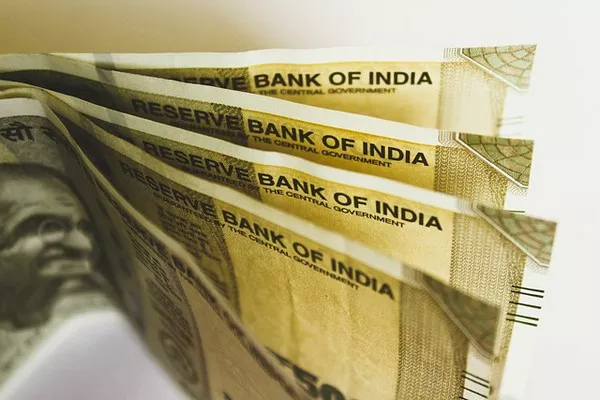Old Indian currency notes hold a special place in the hearts of collectors and enthusiasts alike. Whether passed down through generations or acquired as part of a numismatic collection, these notes carry historical significance and cultural heritage. However, determining the value of old Indian notes can be a daunting task, especially for those unfamiliar with numismatics. This article aims to provide guidance on how to find the value of old Indian notes, exploring various factors that influence their worth and offering tips for assessing their rarity, condition, and market demand.
Understanding Old Indian Notes:
Old Indian notes encompass a wide range of denominations, designs, and historical periods, reflecting India’s rich numismatic heritage. From colonial-era banknotes issued by the British India Government to modern Indian Rupee notes circulated by the Reserve Bank of India (RBI), each note tells a story of India’s economic evolution and cultural diversity. Some of the most sought-after old Indian notes include the Victoria Portrait series, King’s Portrait series, Gandhi series, and Mahatma Gandhi New Series, among others.
Factors Affecting the Value of Old Indian Notes:
Several factors influence the value of old Indian notes, including:
Historical Significance:
Old Indian notes with historical significance, such as those featuring prominent leaders, landmarks, or events, tend to command higher prices among collectors. Notes from significant periods in Indian history, such as the British Raj or India’s independence, are particularly sought after by numismatists and historians.
Rarity and Scarcity:
The rarity and scarcity of a particular Indian note can significantly impact its value. Notes with low mintage numbers, limited circulation, or unique features are considered rare and desirable among collectors. Rare variations, printing errors, or commemorative issues often fetch higher prices in the numismatic market.
Condition and Preservation:
The condition of an old Indian note plays a crucial role in determining its value. Notes in pristine condition, with minimal signs of wear, creases, or discoloration, are highly sought after by collectors. Proper preservation techniques, such as storing notes in protective sleeves or albums, can help maintain their condition and preserve their value over time.
Demand and Popularity:
The demand for specific old Indian notes can fluctuate based on collector preferences, market trends, and cultural significance. Notes featuring iconic designs, rare signatures, or thematic motifs may attract greater interest and command higher prices at auctions or numismatic conventions.
Authentication and Certification:
Authenticity is paramount when assessing the value of old Indian notes. Certifying agencies, such as the Paper Money Guaranty (PMG) or the Numismatic Guaranty Corporation (NGC), offer professional authentication and grading services for paper currency. Certified notes with verified authenticity and graded condition often fetch premium prices in the collector market.
Methods for Finding the Value of Old Indian Notes:
1. Numismatic Catalogs and Price Guides:
Numismatic catalogs and price guides provide valuable information on the value and rarity of old Indian notes. Publications such as the Standard Catalog of World Paper Money (also known as the Pick catalog) or specialized Indian numismatic guides offer comprehensive listings of Indian banknotes, along with historical background, grading criteria, and market values.
2. Online Auctions and Marketplaces:
Online auction platforms, such as eBay, Heritage Auctions, or Catawiki, are popular venues for buying and selling old Indian notes. These platforms feature a wide selection of notes from various sellers, allowing collectors to browse listings, compare prices, and participate in auctions to acquire desired specimens. Conducting thorough research and verifying seller reputation is essential when purchasing notes online.
3. Numismatic Forums and Communities:
Participating in numismatic forums, online communities, or social media groups dedicated to Indian currency collecting can provide valuable insights and resources for assessing the value of old Indian notes. Engaging with fellow collectors, sharing knowledge, and seeking advice from experienced numismatists can help identify rare notes, decipher markings, and evaluate market trends.
4. Local Coin and Currency Shows:
Coin and currency shows, conventions, or numismatic exhibitions are excellent opportunities to network with dealers, collectors, and experts in the field. These events often feature vendor booths, educational seminars, and live auctions, allowing attendees to buy, sell, or appraise old Indian notes in person. Building relationships within the numismatic community can lead to valuable connections and access to rare specimens.
5. Professional Appraisal Services:
Seeking professional appraisal services from certified numismatists or reputable coin dealers can provide accurate assessments of old Indian notes’ value. Professional appraisers have expertise in evaluating factors such as rarity, condition, provenance, and market demand, enabling them to provide reliable estimates and recommendations for selling or insuring valuable notes.
See also: 9 Ways the Reserve Bank of India Affects the INR
Conclusion:
Old Indian notes hold intrinsic value beyond their monetary worth, serving as tangible artifacts of India’s rich cultural heritage and historical legacy. Whether inherited, collected, or discovered, these notes offer a glimpse into India’s past and evoke a sense of nostalgia and curiosity among enthusiasts. Understanding the factors that influence the value of old Indian notes, such as rarity, condition, demand, and authenticity, is essential for collectors and investors seeking to assess their worth accurately. By leveraging resources such as numismatic catalogs, online marketplaces, community forums, and professional appraisal services, individuals can navigate the world of Indian currency collecting with confidence and appreciation for its cultural significance.


